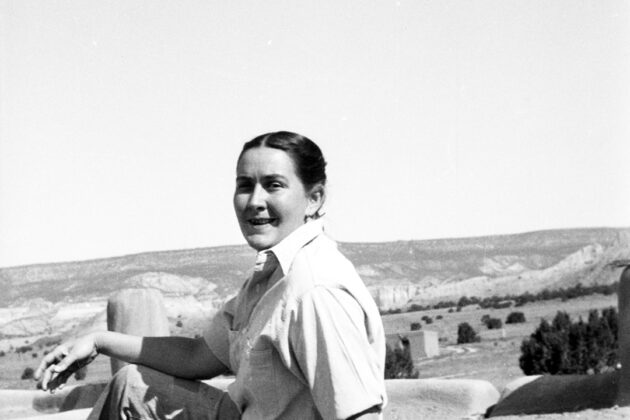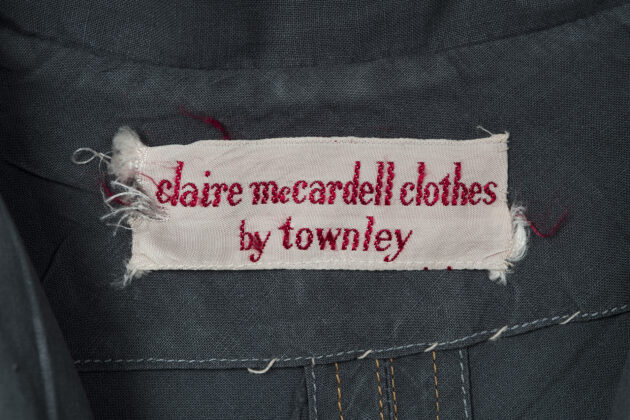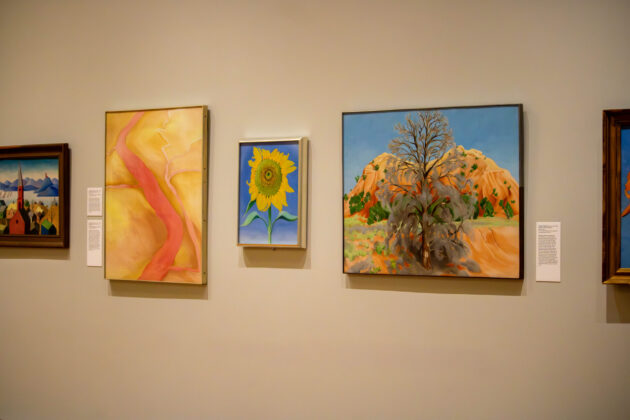
Pre-Doctoral Fellow Reporting from the Research Center
I am a PhD candidate studying the history of twentieth-century American art at the University of Delaware. Last April, I was delighted to accept a fellowship at the Georgia O’Keeffe Museum Research Center, which supports new thinking about American modernism. I began my six-month residency in Santa Fe in early 2016. Much to the surprise of friends and family in Delaware, New York, Ohio, and Pennsylvania (who thought I was going somewhere warm), I arrived just in time to experience 82 beautiful inches of snowfall throughout January and February.
I’ve discovered that reporting to a dedicated, pristine office space is more conducive to reading and writing than working at home in my New York City apartment! Over the course of the last eleven weeks, I’ve made a great deal of progress on my dissertation, which addresses American modernism and reverse painting on glass. The fellowship is especially critical to my research because one of the artists that I focus on, Rebecca Salsbury James (1891-1968), spent the majority of her career in New Mexico. Most of her artwork and the archival information about her life and exhibitions are housed in local and regional collections such as the New Mexico Museum of Art, the Harwood Museum of Art, the Taos Historic Museums, and the Museum of International Folk Art. The proximity of these rich resources has accelerated my research and expanded my knowledge of reverse painting on glass. While I came to New Mexico specifically to learn about James, I’ve developed a fuller understanding of the diverse histories of the Southwest and a deeper appreciation for the distinctive landscapes surrounding Abiquiu, Santa Fe, and Taos.
James had a special connection to the American west, because her father was an owner and manager of Buffalo Bill’s Wild West Show. She initially visited New Mexico in 1926 with photographer Paul Strand, her first husband. She returned to the southwest in 1929 with her friend Georgia O’Keeffe, and the two spent the summer at Mabel Dodge Luhan’s Taos complex, Los Gallos. In the mid-1930s, James abandoned New York City to become a permanent resident of Taos.

James was one of several modern American artists, including Marsden Hartley, Joseph Stella, and Rockwell Kent, to experiment with glass as a canvas in the first half of the twentieth-century. As she described it, “The technique of painting on glass is extremely difficult. Since an easel cannot be used, the glass must be held in one hand and the paint applied to the back of it with the other. Often images have to be reversed mentally … Once the paint is dry there can be no changing. There can be no slip between idea and execution.” Unlike her male colleagues, who worked with glass for brief periods, James sustained a glass painting practice for about three decades. By her own count, she produced two hundred reverse paintings. She also developed an interest in embroidery, contributing to the revival of the Spanish colonial colcha stitch.
The opportunity to discuss unfolding original research with the public is one of the benefits of conducting dissertation research in a museum setting. On Wednesday, March 30, I’ll participate in the museum’s LOO’K Closer program. I’ll also be speaking at the New Mexico Museum of Art on Friday, May 13, about the paintings and photographs that James donated to the museum from her personal collection. On June 21, just before the conclusion of my fellowship, I’ll give a lecture on James’s reverse paintings and embroidery at the O’Keeffe Museum. I hope to see you there!
Featured image: Research Center fellows Elizabeth Ferrell, Alicia Inez Guzman, and Karli Wurzelbacher at O’Keeffe’s home and studio in Abiquiu, February 2016.
This post was written by Karli Wurzelbacher, Georgia O’Keeffe Museum Research Center, Pre-Doctoral Fellow, January 4-June 30, 2016.


